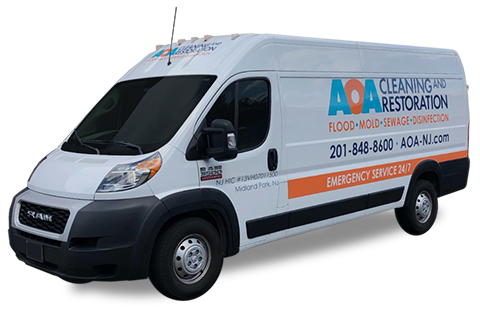Did you know water can climb up to 30 inches in your walls after a flood? This hidden action can cause big damage and increase mold risks if not fixed quickly. After a flood, your walls, like your floors, need fast help to stop water damage and prevent mold. Using moisture meters is key because you can’t see the hidden wet spots with just your eyes.
Getting rid of moisture and drying out walls well is crucial to stop ongoing damage. Quick action with expert drying methods is important. This helps keep your home safe and dry in the long run.
Key Takeaways
- Water can wick up to 30 inches within walls after flooding, often unnoticed.
- Prompt water damage restoration and dehumidification are essential to preventing mold and structural damage.
- Moisture meters help identify hidden dampness that visual inspections might miss.
- Removing baseboards and wallpapers can expedite the evaporation process.
- Using professional drying equipment ensures walls are thoroughly dried, preventing future issues.
Understanding How Water Affects Walls
Water can deeply affect the strength of walls, especially in homes with drywall. When water gets into the gypsum and paper layers, it causes drywall absorption. This makes the walls very wet. Capillary action also plays a part, allowing water to move up or sideways through the material.
Water tends to stay inside walls, especially in drywall, which slows down evaporation. This trapped moisture is a big problem for the building’s strength. It can make walls weaker and more likely to bend or break.
Also, too much moisture means a higher chance of mold growth risk. Mold spores thrive in damp places, which is bad for health and can harm the building more. Homeowners need to watch out for mold when dealing with water damage in walls.
To fix water damage, experts use tools like moisture meters and infrared cameras. These tools find wet spots without damaging the walls. They also consider things like paint and wall coverings that might slow down drying.
Knowing how water moves and builds up in walls helps in fixing them better. By adjusting drying methods to tackle drywall absorption and capillary action, experts can make walls as good as new. This reduces the risk of more damage.
Initial Steps to Take After Flooding
When a flood happens, acting fast is key for fixing water leaks. First, find and stop where the water is coming from. This could be a burst pipe or natural flooding. Stopping the water is crucial to limit damage.
After stopping the water, start cleaning up by removing wet items. This lowers moisture and stops more damage. It’s also important to get good airflow. Open windows and doors, and use fans to move air around. This helps dry things out faster and cuts down on mold problems later.
To drain water from walls, make small holes at the base. This lets trapped water escape. Quickly removing wet drywall or plaster helps with cleanup and lowers the chance of mold. If the flood is big, you might need experts for a full fix to deal with structural issues and fix water leaks.
Drying Techniques for Removing Moisture from Walls
After flooding, it’s key to dry out walls fast to avoid lasting damage. Using the right moisture removal methods is the first step. The size of the water damage will guide the best approach to drying.
For small damp spots, room fans can speed up drying. Place fans to blow air directly on the damp area. For bigger areas, you’ll need to use dehumidifiers. These machines cut down humidity, helping to fix water damage faster. Make sure to pick a dehumidifier that fits the size of your room for best results.
In tight spaces, moisture traps can soak up extra moisture from the air. For big water damage, you might need professional help. Experts have the right tools and knowledge for quick drying and advanced methods like inner-wall drying systems.
To dry walls faster, open wall vents and windows when the weather allows. Adjusting your heating and cooling can also help. Always use electrical and drying gear safely, following the maker’s instructions.
Drying walls takes time, but you can speed it up by removing wall coverings and keeping air moving. In bad cases, you might need to replace damaged insulation and drywall for full drying.
When to Call a Professional
When flooding causes a lot of damage, you need a water damage specialist. Experts are key for big damage, complex issues, or health risks like mold. Restoration services use top-notch tools and methods. This includes high-capacity air movers and low-grain refrigerant dehumidifiers for drying and mold prevention.
- Advanced tools and methods for effective drying
- Monitoring progress and ensuring equipment functions optimally
- Addressing potential issues with various insulation types
- Installing inner-wall drying systems when appropriate
- Preventing mold development through consistent monitoring
Getting help from mold remediation experts keeps your home safe and ensures drying is done right. Professional moisture removal is key to avoiding future problems. With restoration services, cleanup starts fast, reducing more damage. Experts make sure their gear runs well and check on things every day. This gives you peace of mind as your home gets back to normal.
Conclusion
Managing moisture in walls after a flood requires a detailed plan. It’s important to know how water affects building materials. Quick action is key to stop mold and damage.
Homeowners must stay vigilant and patient as walls dry out. This ensures all moisture is removed for complete recovery.
For severe flooding, getting professional help is a must. These experts have the right tools and knowledge to fix water damage. Their help makes fixing your home faster and safer.
Quick actions and expert advice are crucial after a flood. By understanding water damage and drying walls properly, homeowners can recover quickly. This approach protects your home from future flood damage.




















